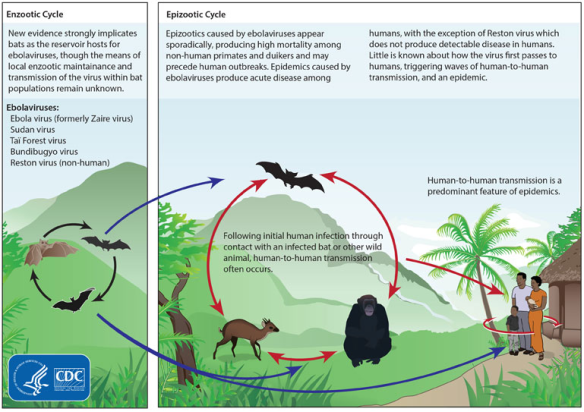 First Case of Ebola
First Case of Ebola

– Reference (9)
Ebola epidemic first appeared in 1976 in 2 cities, one is Nzara, South Sudan, and another is Yambuku, Democratic Republic of Congo (1).
The outbreak of Ebola in Sudan infected over 284 people, 53% of those people died. And Ebola emerged from Yambuku, Zaire, infected 318 people, whose mortality rate is 88%. Then, people named this deadly virus Ebola, after the tragedy near Ebola River in Zaire (1).
 Reported Cases & Distribution
Reported Cases & Distribution

– Reference (5) *Numbers reflect laboratory confirmed cases only.
The Ebola virus outbreak in 2014–2016 in West Africa is the largest and most complex one ever known, damaging healthcare systems and the economies of countries (2). Also, the number of reported cases and deaths is higher than all others combined. During the peak of the epidemic, autumn 2014, the double time is only few weeks (2). The officially recorded cases are much less than that unrecorded (2).
It took three months to identify the first cases and more than five months to publish a health emergency alert, thus the WHO was criticized for not reacting fast enough to this outbreak (2). In this case, Ebola virus went over several countries, started from Guinea, then spread to Sierra Leone and Liberia (2).

– Reference (7)
 Cause of Ebola
Cause of Ebola
Bats

– Reference (8)
The cause and spread of the Ebola virus are considered linked to bats (3).
They made a hypothesis that quick spread of this virus may be due to bats’ travel patterns across Africa (3).
However, there is no substantial evidence or studies to verify this.
Other Animals
Meanwhile, WHO says that Ebola was brought to the human population through the secretions, blood, organs or other bodily fluids of many different infected animals (3). Other than bats, other animals can also transmit the virus in their secretions, organs, and other fluids such as monkeys, chimpanzees, gorillas, forest antelope, and porcupines (if infected) (3).
 Transmission
Transmission

– Reference (6)
Ebola is considered a zoonosis, which is present in animals and is transmitted to humans (4). It is important to note that the Ebola Virus, unlike other viruses, is not spread through the air. It is also not spread in water or through contaminated food.
Human-to-human transmission is a predominant feature of epidemics, it can occur through:
- contact through the broken skin with the blood or body fluids of infected people.
- Exposure to objects that have been contaminated by the Ebola virus, such as needles and syringes.
- Burial ceremonies in which mourners have direct contact with the body of the deceased.
- Exposure to the semen of people with Ebola virus, within 7 weeks after recovery from Ebola.
- Contact with patients – especially the healthcare workers (4).
To learn more about the stages and symptoms of Ebola, click here.
 Page References
Page References
- https://virus.stanford.edu/filo/history.html
- https://www.theguardian.com/world/2014/sep/25/-sp-ebola-crisis-briefing
- https://www.livescience.com/48311-ebola-causes-symptoms-treatment.html
- https://www.medicalnewstoday.com/articles/280598.php
- https://www.cdc.gov/vhf/ebola/outbreaks/history/distribution-map.html
- https://en.wikipedia.org/wiki/Ebola_virus_disease#/media/File:EbolaCycle.png
- http://www.who.int/csr/disease/ebola/response/phases/en/
- http://www.bbc.com/news/health-30632453
- http://allafrica.com/view/group/main/main/id/00032249.html
